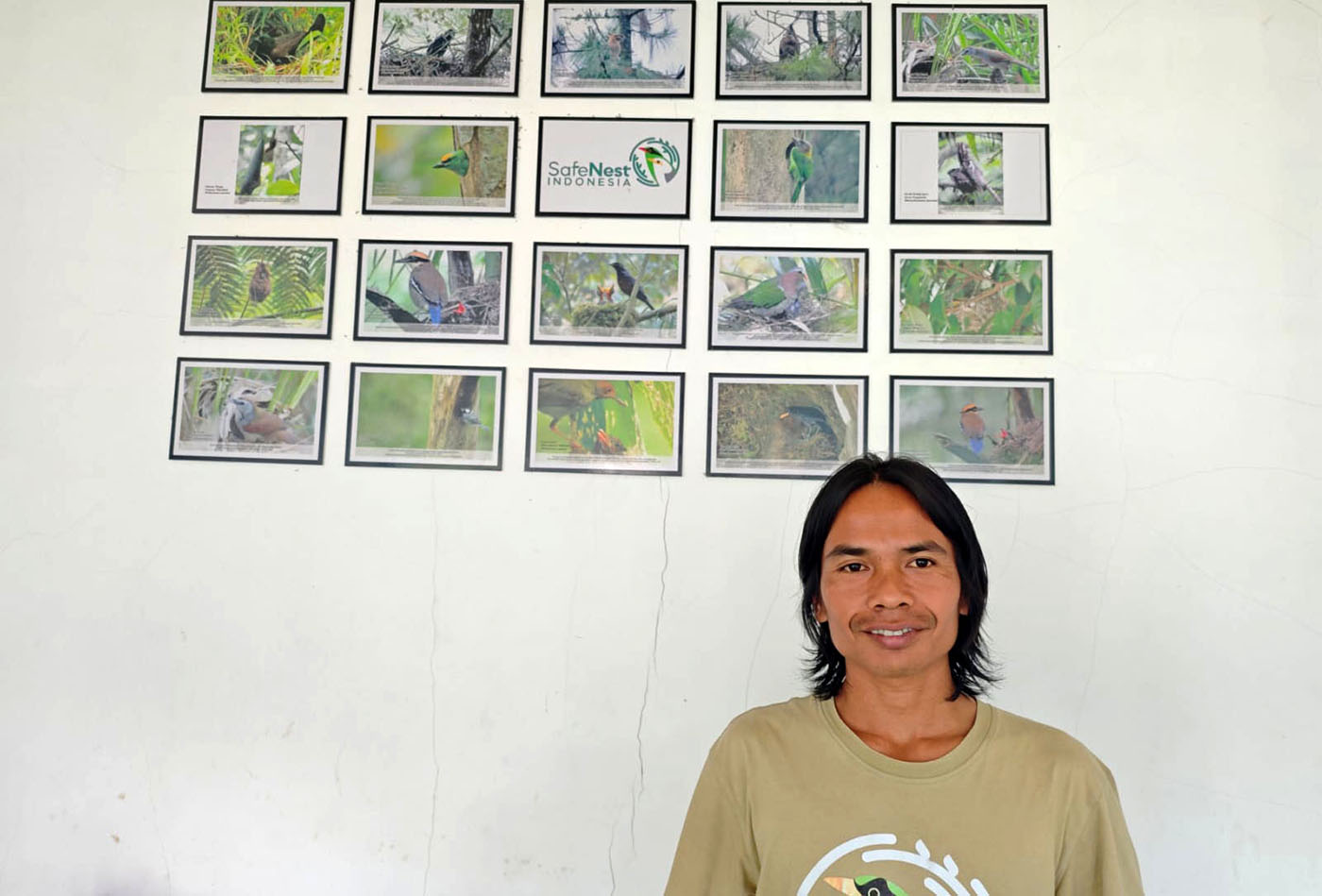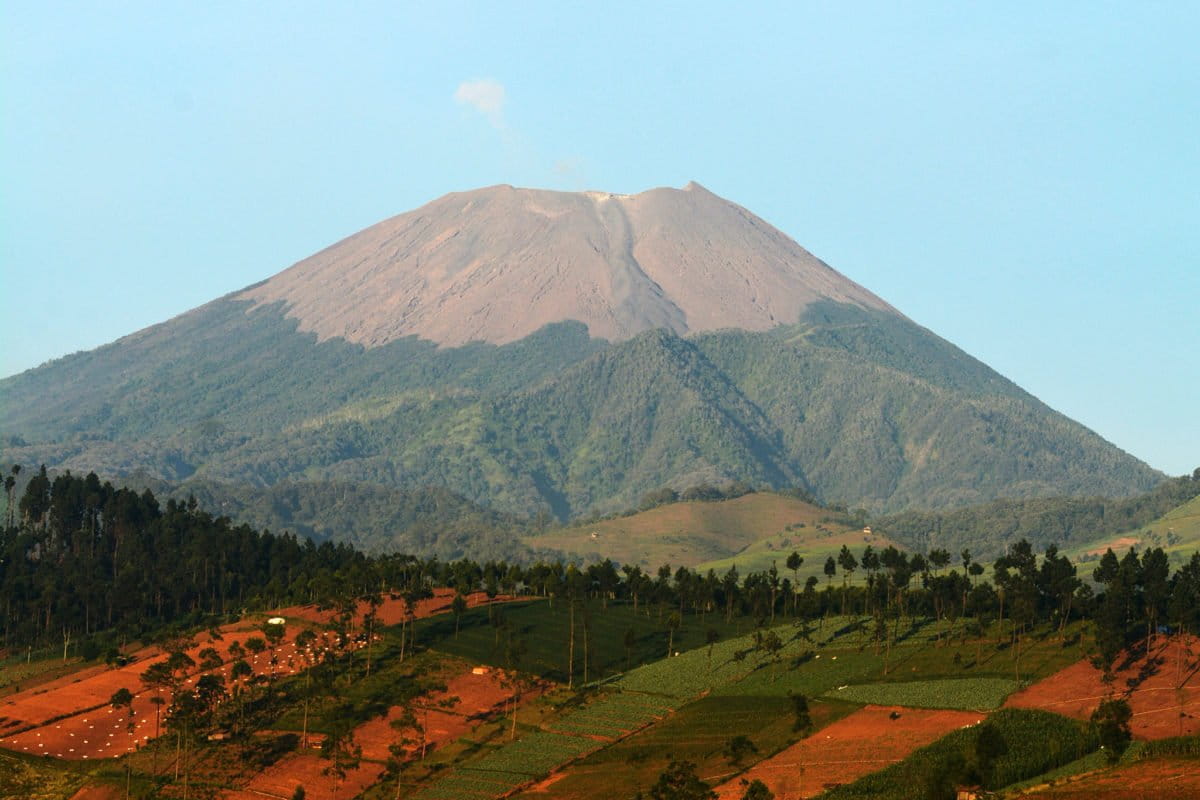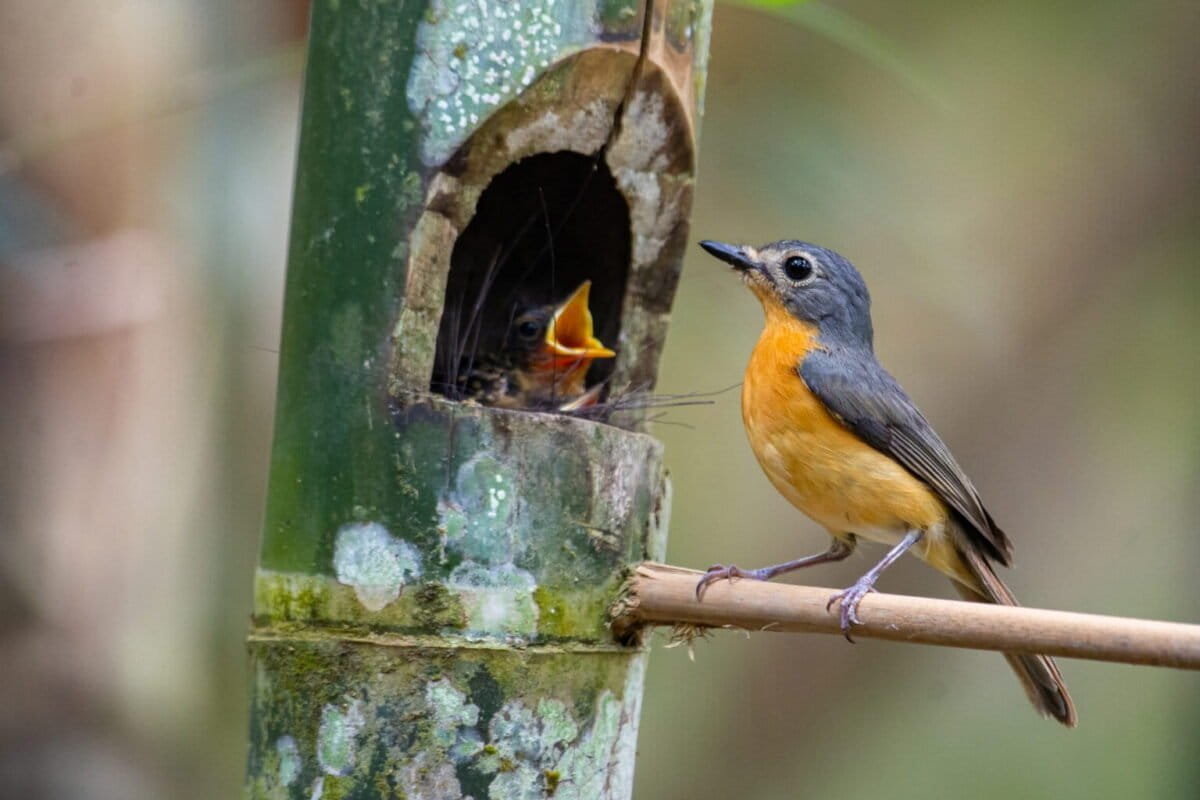- Ari and Junianto began hunting birds as children in the foothills of Java’s Mount Slamet, near their home in Sambirata village.
- Trapping birds for the illegal wildlife trade became their main livelihood over time, with much of the trade shifting from local markets to social media as the pair came of age and internet access proliferated.
- Ari and Junianto’s view of their vocation shifted in their 20s, and they began to work with conservation organizations to help map bird nests and protect forest areas. Today the pair are active conservationists in Banyumas district, giving talks in schools on the district’s birdlife and working with local charities.
- Banyumas, and the wider Central Java province, is home to numerous endangered and critically endangered species of birds owing to the trade in caged birds, according to the conservation authorities.
BANYUMAS, Indonesia — As youngsters, Ari and Junianto would clamber over the upland above Sambirata village, gathering sap to glue-trap the birds nesting below Java’s Mount Slamet.
“If it gets wet it’ll lose its stickiness, so you’d have to place it during the day,” Junianto, now in his mid-30s, told Mongabay Indonesia as he pressed on through thin mist up Mount Slamet together with Ari.
Junianto learned to trap birds in the fourth grade. Before long, hunting had become his primary occupation. Often he would carry a small snake as bait for bigger birds.
Within half an hour, they’d usually catch a white-eye (from the Zosteropidae family) or an olive bulbul (Iole viridescens) — both are greenish songbirds — somewhere between 800 and 1500 meters (2,600 and 4,900 feet) up the mountain.

Their contact lists grew as they became more experienced hunters. Junianto began stockpiling birds from other hunters that he supplied to traders in the neighboring city of Purwokerto. Ari, meanwhile, branched out into selling species on social media.
Between 2011 and 2012, he sold not just songbirds, but also slow lorises (Nycticebus coucang), sugar gliders (Petaurus breviceps) and even Javan hawk-eagles (Nisaetus bartelsi), Indonesia’s national bird — the equivalent of trading bald eagles (Haliaeetus leucocephalus) in the U.S.
Ari recalled earlier hunting expeditions with a neighbor, when they would trap 400 white-eyes. Over time, however, the numbers plunged.
“The number of birds went down because they were always being caught,” Junianto said, adding that this made it harder to make a living from hunting.
As for Ari, he quickly went from hunter to hunted: the authorities were on to him. He received formal notification from the Central Java conservation agency, or BKSDA, that it was aware of his social media trading.
“It felt like I was being hunted. So I quit entirely,” he said.

‘We’ll support them’
In 2013, Ari encountered the Biodiversity Society, a local conservation group founded in Purwokerto in 2002. He joined the organization and started out collecting data while mapping bird nests on Mount Slamet. When he came across other bird hunters in the area, he would try to recruit them to switch sides.
“If a local person is doing something bad, we’ll try to counsel them,” Ari said. “If they’re doing good, we’ll support them — a lot of hunters have now become forest guardians.”
Junianto borrowed his brother’s camera and began photographing the birds he used to catch, using an eye for detail honed from years as a hunter of eagles and songbirds.
Fieldworkers for international organizations attribute the declining populations of threatened songbirds to trappers like Ari and Junianto, who for years have supplied species for the grim trade in caged birds.
Local forestry officials conducted biodiversity surveys on Mount Slamet in 2022 and partnered with former hunters, who were best placed to locate bird nests.
Aswi Andriasari Rofiqoh, a biologist at Jenderal Soedirman University in Purwokerto, said people have always associated a healthy landscape with the presence of birdlife.
“Their existence reflects the quality of the environment, and preservation is an important legacy for the future generations,” Aswi said.
“Bird conservation is important, not only for ecological reasons, but also for the economic and cultural value of communities,” she added.

‘We can achieve something’
Burung Indonesia, the local affiliate of conservation NGO BirdLife International, has previously recorded eight species of threatened birds around Mount Slamet.
The most recent survey by the IUCN, the global wildlife conservation authority, recorded 600-900 Javan hawk-eagles, an endangered species, in the wild, with around half of that number being mature individuals.
Fewer than 2,500 endangered rufous-fronted laughingthrushes (Garrulax rufifrons), also endangered, are believed to remain today, according to the IUCN. The critically endangered Javan pied starling (Gracupica jalla) is likely extinct in the wild, the result of years of relentless trapping.
“If birds disappear from the forest, forest regeneration will be hampered, the food chain will be disrupted, and the ecosystem will lose its balance,” Aswi said.
Having once contributed to this imbalance, Ari said he’s now determined to try to make up for it.
“It will be difficult to restore the bird population that’s been lost,” he said. “But if we [work] consistently, we can achieve something.”
In 2018, Ari won the Wana Lestari conservation prize, awarded by the Central Java provincial government. A year later, the Central Java governor and 2024 presidential candidate, Ganjar Pranowo, presented Ari with the Kalpataru award, the highest environmental accolade handed out by Indonesia’s government.
Every time Junianto hears a songbird in the morning reinforces his new sense of purpose. For Ari, every nest protected is a small, but meaningful victory.
“I used to think hunting was cool, it was easy money,” Ari said. “Now I realize protecting [the birds] is worth a lot more.”

Banner image: A mother Javan blue flycatcher (Cyornis banyumas) is seen feeding her young in their nest. Image courtesy of Burung Indonesia/Jihad.
This story was first published in Indonesian here on Aug. 18, 2025.
